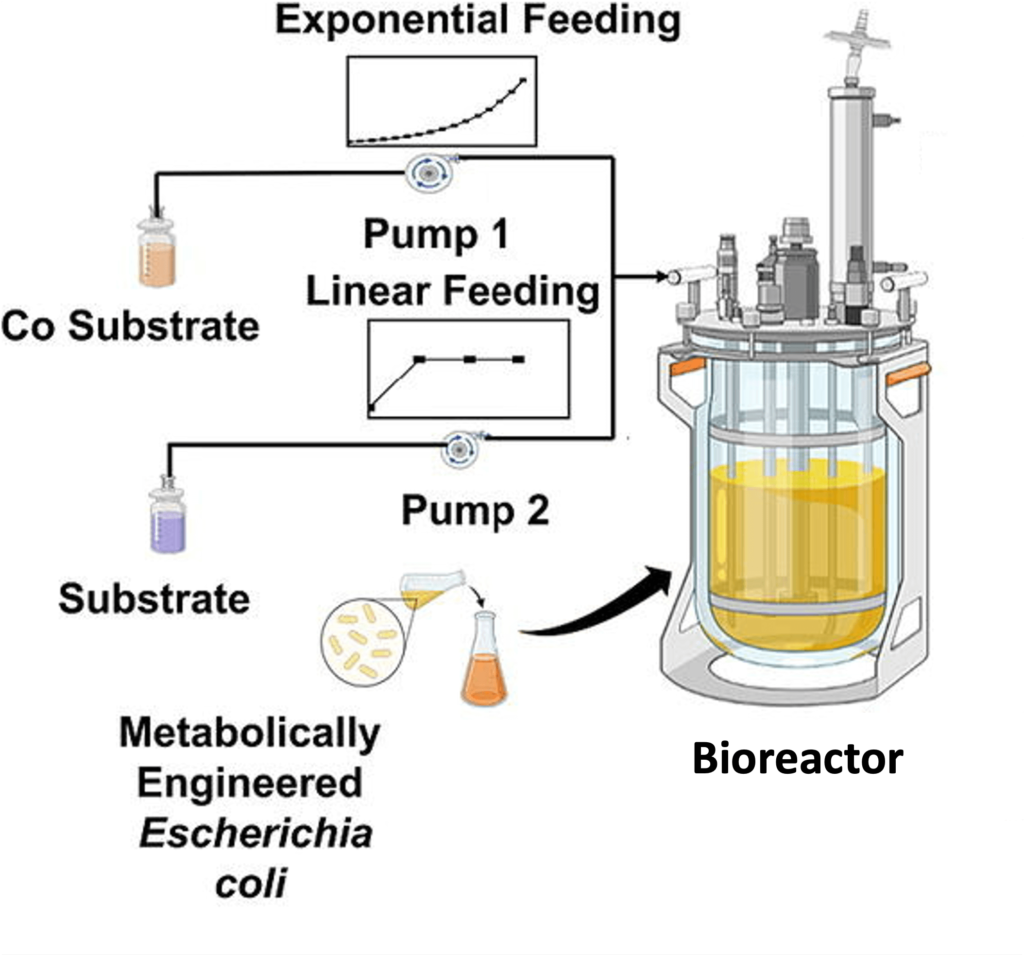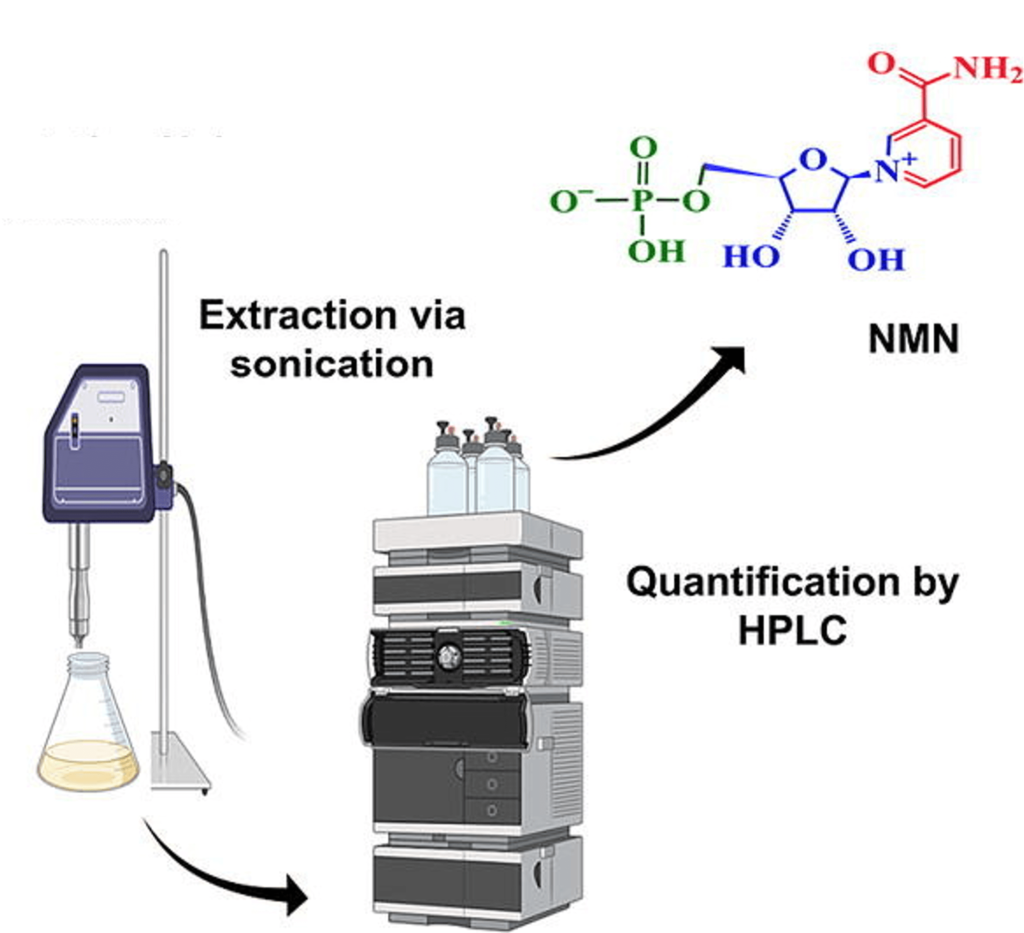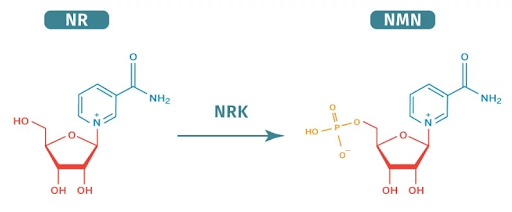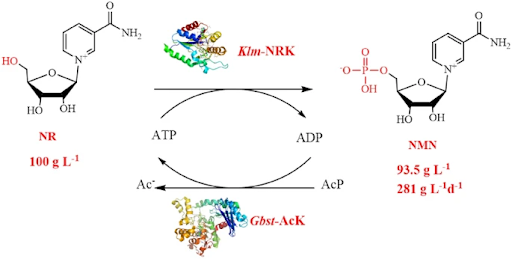How Are NMN Supplements Made?
NMN can be made with chemicals, genetically engineered microorganisms, or enzymes, with each method varying in how much they cost, how much NMN they yield, and how they impact the environment.
Highlights:
- Chemical synthesis of NMN is the most common method for making NMN supplements but can be hazardous to the environment.
- Bacterial fermentation of NMN is eco-friendly but slow to produce NMN.
- Enzymatic conversion of NMN is both eco-friendly and produces higher yields of NMN than bacterial fermentation.
In a frantic response to the coming boom in the world’s elderly population, scientists have been in search of compounds capable of slowing the aging process. Among these anti-aging compounds is nicotinamide adenine dinucleotide (NAD+), a naturally occurring essential molecule revealed to decline with age in animals and humans.
Since the NAD+ precursor nicotinamide mononucleotide (NMN) has been shown to increase NAD+ levels in humans, many have turned to NMN supplements in hopes of staying young. This includes Harvard Professor David Sinclair who helped bring NMN to the public’s awareness. Still, while there is a wide variety of NMN supplements on the market, some may wonder how they are made.
How is NMN Made?
Like NAD+, NMN occurs naturally in all living organisms. Because of this, there are several ways to manufacture purified NMN supplements. Chemical synthesis is widely utilized by most manufacturers, but this method can be costly and can be harmful to the environment. Alternatively, eco-friendly methods take advantage of NMN’s presence in microorganisms like bacteria or utilize naturally occurring enzymes.
Chemical Synthesis
There are several ways to synthesize NMN using chemical agents. One way is based on the Zincke reaction, named after the German chemist Enrst Carl Thedor Zinke.

(Makarov & Migaud, 2019 | Beilstein J. Org. Chem.) Chemical Synthesis of NMN. Left: Theodor Zincke (1900) developed the Zincke reaction, used by today’s chemists to synthesize NMN. Right: p-toluenesulfonate (23) is converted to 2′,3′-O-isopropylidene-α/β-D-ribofuranosylamine (24) and reacted with N-(2,4-dinitrophenyl)-3-carbamoylpyridinium chloride (22) to form α/β-N-(2,3-O-isopropylidene-D-ribofuranosyl)-3-carbamoylpyridinium salt (25), which after treatment becomes ⍺- and β- NMN.
To make NMN using the Zincke reaction, manufacturers start with a material called p-toluenesulfonate. This common ingredient is then treated with various chemicals, leading to changes in its structure, resulting in two types of NMN: ⍺-NMN and β-NMN. β-NMN is then isolated and purified, as it is the form of NMN our bodies recognize and use to make NAD+.
While this is one example of how NMN can be chemically synthesized, there are many other techniques involving different starting materials, chemicals, and procedures.
Bacterial Fermentation
The chemical agents used for the chemical synthesis of NMM can be costly and may only be cost-effective when made in large batches. Furthermore, the waste produced by the use of chemicals can be hazardous to human health and the environment. A more healthy and environmentally friendly alternative to the chemical synthesis of NMN is through bacterial fermentation.
All living cells produce NMN, including bacteria. With this in mind, scientists have figured out how to make bacteria such as E. coli generate even more NMN via genetic modification. Additionally, to further enhance NMN yields, researchers have refined ways to grow as many bacteria as possible without disrupting NMN production.
In a recent study, scientists grew genetically engineered E. coli in a specialized bacteria-growing container called a bioreactor. Since bacteria eat glucose for energy, glucose was added to the bioreactor. And since nicotinamide is used by cells to make NMN, this NAD+ precursor was also added to the container. In this way, the bacteria had the energy and starting material needed to both replicate and continually produce NMN.

(Kafle et al., 2023 | Bioresource Technology) Growing NMN-Producing Bacteria. To maximize bacterial growth and NMN production, genetically engineered E. coli were fed glucose (Co Substrate) and nicotinamide (Substrate) within a bioreactor.
After about 24 hours, the number of bacteria within the bioreactor had increased to appropriate levels so that NMN could be extracted. To do this, the bacterial cells were broken open, allowing their contents to spill out. The NMN was then separated and isolated from the rest of the contents. This method was used to obtain the highest yield of NMN from fermented bacteria to date (19.3 g/L).

(Kafle et al., 2023 | Bioresource Technology) Extracting and Purifying NMN from Bacteria. Bacteria were broken open through sonication to extract the contents within. High-performance liquid chromatography (HPLC), which carefully separates compounds, was used to isolate and quantify the NMN.
Enzymatic Conversion
Our body uses enzymes to speed up biochemical reactions within our cells. To this end, NMN’s direct precursor nicotinamide riboside (NR) is converted to NMN with the help of an enzyme called nicotinamide riboside kinase (NRK). During this reaction, an adenosine triphosphate (ATP) — what our cells use for energy — is consumed by donating a phosphate group.

(NAD.com) NR Conversion to NMN. The NRK enzyme attaches a phosphate group (yellow) to NR to form NMN. The phosphate comes from ATP.
The problem with attempting this reaction in a beaker is that ATP is expensive. For example, 10 grams of ATP can cost $629 and over 50 grams of ATP may be used for one batch of NMN. Therefore, scientists have devised ways to replenish ATP supplies by adding ATP-replenishing enzymes to the mix.
In a recent study, scientists tested highly efficient NRK enzymes extracted from a fungus called K. marxianus. These fungus NRK enzymes were used in conjunction with inexpensive and efficient ATP-replenishing enzymes to give yields of NMN reaching 281 g/L in one day. This study illustrates the much larger yields of NMN achieved by enzymatic conversion compared to bacterial fermentation, which produces only 19.3 g/L of NMN per day, about 14-fold less NMN.

(Qian et al., 2022 | Bioresources and Bioprocessing) Enzymatic Conversion of NMN. The Klm-NRK enzyme from fungi converts 100 g/L of NR to 93.5 g/L of NMN per batch, or 281.5 g/L of NMN per day. ATP is replenished (from ADP) with the Gbst-AcK enzyme.
How Is Your NMN Supplement Made?
Unfortunately, many brands of NMN aren’t transparent about their manufacturing practices. Few brands detail their method of NMN synthesis, which may or may not be good for the consumer. Some chemical synthesis methods for NMN allow for high yields, but it can be difficult to remove all impurities.
While many companies shy away from bacteria fermentation because of low yields, companies that use enzymatic conversion may produce the most pure NMN supplements. However, without full transparency from all NMN brands, it is difficult to know where most NMN supplements are sourced.

